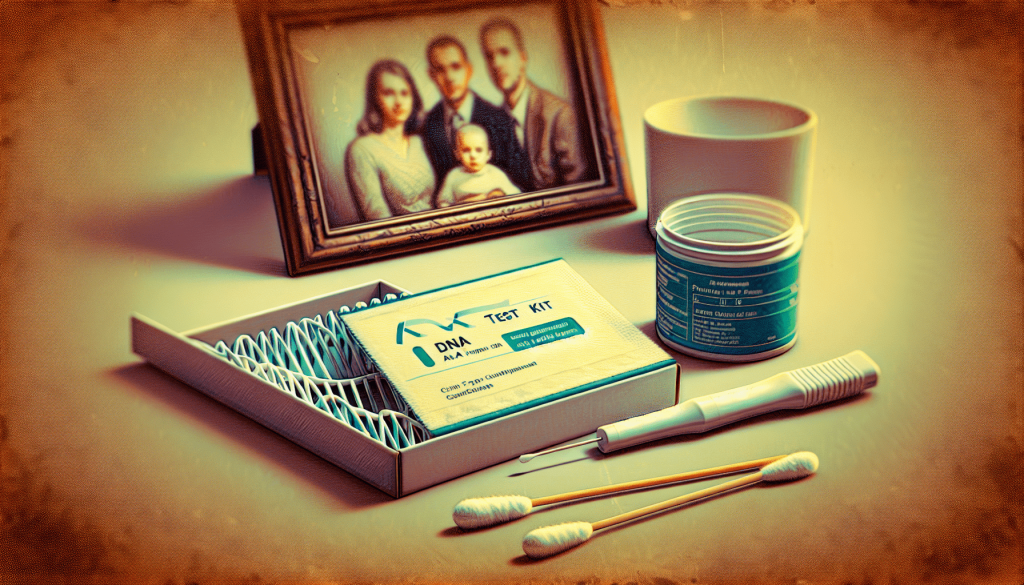How Long Does A Paternity DNA Test Take?” In this article, you’ll discover the step-by-step process, from the initial sample collection to the final results. You’ll learn about the factors that can influence the duration, such as the type of test you choose and the laboratory’s efficiency. Whether you’re seeking answers for legal reasons or personal clarity, this guide aims to set your expectations and ease any concerns about the timeframe involved in this important procedure.
Have you ever wondered how long a paternity DNA test takes? The curiosity about the timeline for such a test can be quite pressing, particularly when there are important legal, personal, or emotional consequences at stake. Understanding the steps and timeframes involved can help alleviate some of the stress associated with the process. In this article, we’ll walk you through the journey of a paternity DNA test—from sample collection to the arrival of results. By the end, you’ll have a clearer picture of what to expect.

What is a Paternity DNA Test?
A paternity DNA test determines whether a particular man is the biological father of a child. It examines the DNA of the alleged father, the child, and sometimes the mother to confirm a biological relationship.
Why is it Important?
The reasons for undergoing a paternity DNA test can vary widely, from personal reassurance to legal requirements. Knowing the biological parentage can have significant impacts on:
- Legal obligations and rights
- Emotional and familial bonds
- Health history and genetic background
Types of Paternity DNA Tests
Understanding the different kinds of tests can help you select the one that best fits your circumstances. Each type has its own set of timeframes and procedures.
| Test Type | Description | Timeline to Results |
|---|---|---|
| Legal Paternity Test | Utilized for legal purposes such as custody | Approximately 1-2 weeks |
| Non-Legal/At-Home Test | Used for personal knowledge, not admissible in court | Around 3-5 business days |
| Prenatal Paternity Test | Determines paternity before the baby is born | Generally 1-2 weeks |
Legal Paternity Test
A legal paternity test is designed for use in court and therefore requires a stringent chain of custody to ensure the integrity of the samples. This test is often required in cases of child support, custody disputes, or inheritance claims.
Non-Legal/At-Home Test
These tests are for personal use and are not admissible in court. They offer a convenient and private way to determine paternity. The process generally involves ordering a kit online, collecting samples at home, and mailing them to a lab.
Prenatal Paternity Test
This test can determine paternity before the baby is born. It is more complex and carries higher risks, but it provides early knowledge which can be crucial for family planning or legal situations.
The Step-by-Step Process
Regardless of the type of paternity DNA test you choose, the process typically follows a specific series of steps. Understanding these steps can help you manage expectations and timelines more effectively.
Step 1: Decision to Test
The first step in the process is deciding to take the test. This decision can be driven by various factors, such as seeking parental rights, resolving doubt, or fulfilling legal requirements. Once you’ve decided, you’ll need to choose the type of test that suits your needs.
Step 2: Sample Collection
The sample collection method may vary depending on the type of test, but it usually involves collecting a swab from the inside of the cheek (buccal swab). For prenatal tests, blood samples from the mother and alleged father might be required.
| Sample Collection Method | Details |
|---|---|
| Buccal Swab | Non-invasive, simple, commonly used for most tests |
| Blood Sample | Required for prenatal tests, involves drawing blood |
Step 3: Lab Processing Time
Once the samples have been collected, they are sent to a laboratory for processing. The length of time this takes can depend on several factors, including the complexity of the test and the volume of tests the lab is handling.
Step 4: Analysis
In the lab, scientists will extract DNA from the collected samples and analyze it. This analysis looks for specific markers to confirm a biological relationship. Although the specifics can vary, this stage generally takes a few days to a week for most tests.
Step 5: Results
Once the DNA analysis is complete, the results are compiled into a report. This report can either be mailed or made available online, depending on the testing service. The final step is getting these results to the individuals involved.
Factors Affecting the Timeline
Several variables can influence how long a paternity DNA test takes from start to finish. Understanding these factors can help you better manage expectations.
Type of Test
As mentioned earlier, the type of test significantly impacts the timeline. Legal and prenatal tests usually take longer due to the additional procedures involved.
Lab Processing Time
Laboratories have varying processing times depending on their technology and workload. Some labs offer expedited services for an additional fee.
Sample Collection Method
Some methods of sample collection, particularly prenatal methods involving blood samples, inherently take longer due to medical procedures involved.

Legal vs. Non-Legal Considerations
The type of test you choose can influence not just the timeline but also the implications of the results.
Chain of Custody
For legal paternity tests, a strict chain of custody must be maintained, which means that samples need to be collected and handled by authorized personnel to ensure they’re admissible in court. This can add additional steps and time to the process.
| Legal Considerations | Non-Legal Considerations |
|---|---|
| Court Admissible | Not Court Admissible |
| Requires Chain of Custody | Home Collection Available |
| Generally Longer Timeline | Generally Shorter Timeline |
Documentation
Legal tests require additional documentation and verification steps, while non-legal at-home tests have fewer formalities, making them quicker.
Understanding the Results
The final stage of a paternity DNA test is, of course, obtaining and understanding the results. Knowing what to expect can help alleviate anxiety.
Positive/Negative Result
The result will indicate either a positive or negative paternity match. A positive result confirms the biological relationship, whereas a negative result denies it.
Probability
Even a positive result will often be expressed in terms of probability (usually more than 99.9%), as DNA testing can never be 100% certain due to biological variations.
Report Delivery
The report will generally be delivered either online or via mail. Ensure you understand the delivery method and timeline, as receiving the report promptly can be crucial for proceeding with any necessary next steps.
Cost and Affordability
The cost of a paternity DNA test can vary widely depending on the type and urgency of the test. Here’s a general breakdown:
| Type of Test | Estimated Cost (USD) |
|---|---|
| Legal Paternity Test | $300 – $500 |
| Non-Legal/At-Home Test | $100 – $200 |
| Prenatal Paternity Test | $1,000 – $2,000 |
Additional Fees
Expedited services, additional testing for multiple alleged fathers, or international shipping can increase the total cost.
Emotional and Ethical Considerations
While DNA tests provide scientific clarity, the emotional and ethical implications can be profound.
Emotional Impact
Receiving the results of a paternity test can have significant emotional consequences for all parties involved. It is often advisable to prepare emotionally for potentially unexpected results and consider seeking counseling support if needed.
Ethical Issues
Ethical considerations include the rights to privacy, the child’s best interests, and potential long-term psychological impacts. Discussing these matters with a healthcare provider or ethical consultant can be beneficial.
Preparing for the Test
Proper preparation can make the process smoother and quicker.
Documentation
Ensure you have all necessary documentation, especially for legal tests. This includes identification and any court orders.
Sample Collection
Follow the instructions carefully for collecting samples to avoid any delays caused by invalid or contaminated samples.
After the Test
Once you receive your results, what comes next?
Legal Steps
If the test was court-ordered, submit the results to the appropriate legal authority. Consult with a lawyer if needed for further steps.
Personal Decisions
Use the results for personal decisions, whether it’s to resolve doubts, adjust familial relationships, or address health concerns.
Frequently Asked Questions (FAQs)
Q: How accurate is the test?
A: DNA paternity tests are generally over 99.9% accurate when conducted properly.
Q: Can I get results faster?
A: Some labs offer expedited services for an additional fee.
Q: Is the mother’s DNA required?
A: While not always necessary, including the mother’s DNA can make the results more accurate.
Q: Can results be challenged in court?
A: Legally admissible tests following proper procedures are typically robust against challenges, but procedural errors can be grounds for contestation.
Conclusion
Understanding the timeline for a paternity DNA test, from initial decision to receiving the results, can significantly ease the process and help you prepare both practically and emotionally. With various types of tests available—from legal to non-legal and prenatal—choosing the right one based on your needs and understanding the steps involved can streamline the entire experience. Whether driven by legal requirements or personal reasons, being informed about what to expect at each stage can bring clarity and peace of mind.

